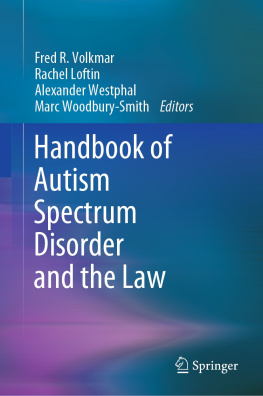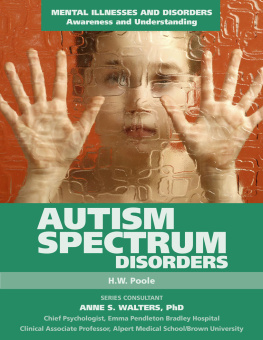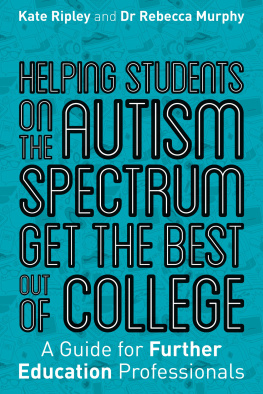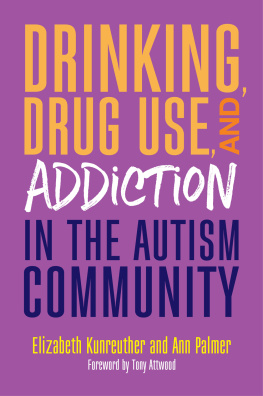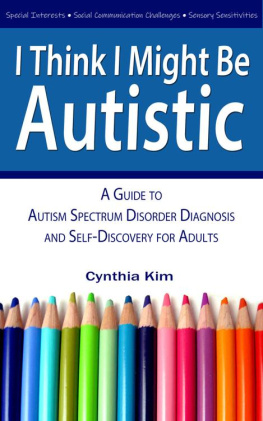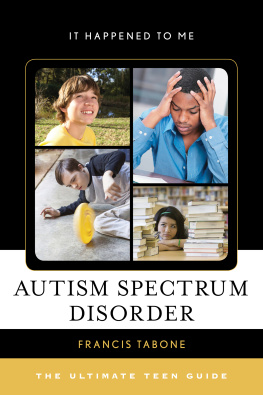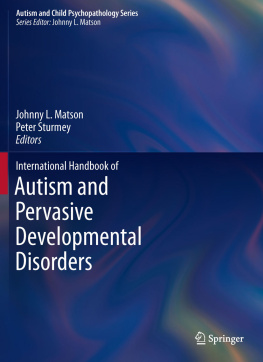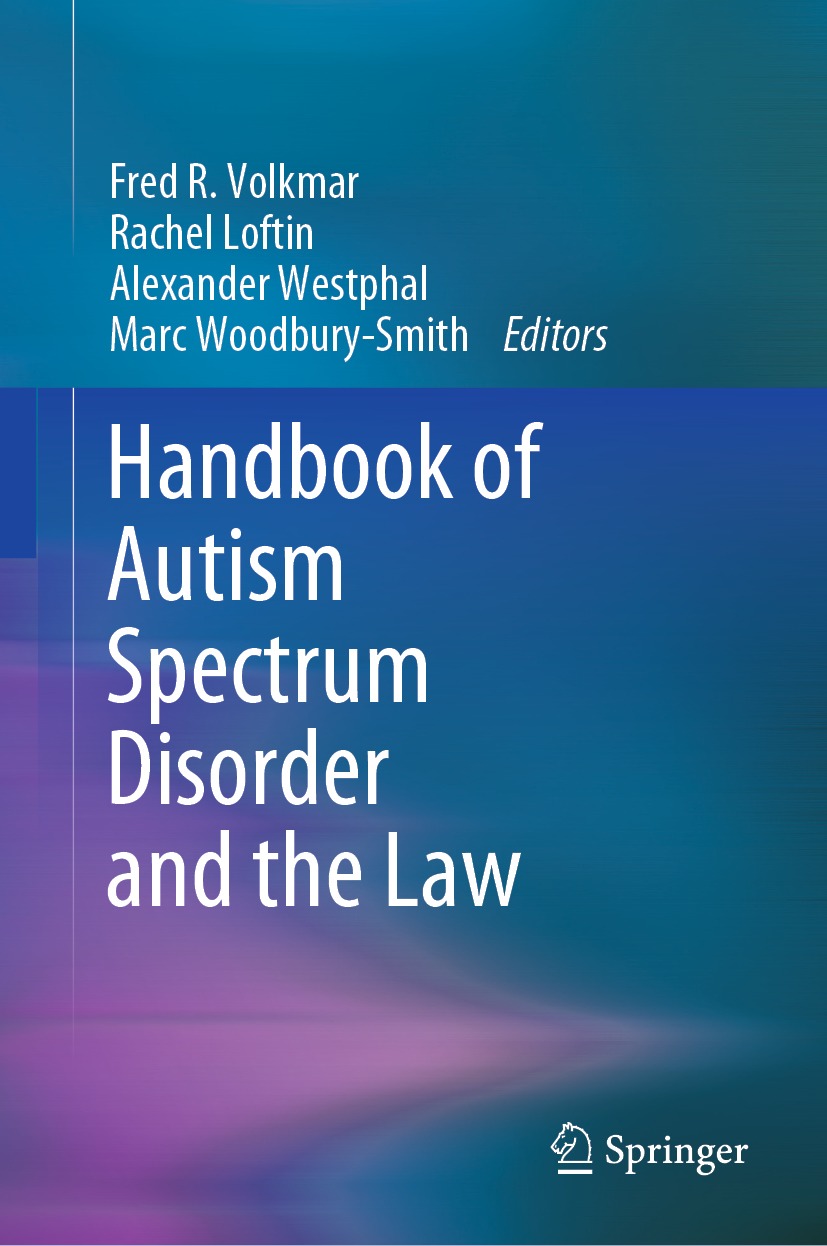Editors
Fred R. Volkmar
Yale Child Study Center and Autism Center of Excellence, Yale University and Southern Conn. State University, New Haven, USA
Rachel Loftin
Department of Psychiatry and Behavioral Sciences, Northwestern University Feinberg School of Medicine, Chicago, USA
Alexander Westphal
Division of Law and Psychiatry, Yale School of Medicine, New Haven, USA
Marc Woodbury-Smith
Biosciences Institute, Newcastle University, Newcastle upon Tyne, UK
ISBN 978-3-030-70912-9 e-ISBN 978-3-030-70913-6
https://doi.org/10.1007/978-3-030-70913-6
Springer Nature Switzerland AG 2021
This work is subject to copyright. All rights are reserved by the Publisher, whether the whole or part of the material is concerned, specifically the rights of translation, reprinting, reuse of illustrations, recitation, broadcasting, reproduction on microfilms or in any other physical way, and transmission or information storage and retrieval, electronic adaptation, computer software, or by similar or dissimilar methodology now known or hereafter developed.
The use of general descriptive names, registered names, trademarks, service marks, etc. in this publication does not imply, even in the absence of a specific statement, that such names are exempt from the relevant protective laws and regulations and therefore free for general use.
The publisher, the authors and the editors are safe to assume that the advice and information in this book are believed to be true and accurate at the date of publication. Neither the publisher nor the authors or the editors give a warranty, expressed or implied, with respect to the material contained herein or for any errors or omissions that may have been made. The publisher remains neutral with regard to jurisdictional claims in published maps and institutional affiliations.
This Springer imprint is published by the registered company Springer Nature Switzerland AG
The registered company address is: Gewerbestrasse 11, 6330 Cham, Switzerland
Foreword: Autism and Law
Our societal treatment of those with autism is checkered at best. For much of the twentieth century, autism has been misunderstood and misperceived as a disorder. Separated and shunned from the rest of society for much of the past century, it is only in the very recent past that integration has become de rigueur. Today, the challenge is to understand how we integrate a portion of the population that intrinsically has challenged most of us fail to comprehend and appreciate. Autism often presents itself as an invisible challenge. The casual observer may look at someone and not be able to discern whether or not the person with whom they are engaging is autistic. Yet their challenges navigating the social world can be daunting. For instance, one of the day-to-day challenges of individuals on the spectrum is comprehending and adapting to social normsWhat does that look mean? Why did he/she say that? Is someone approaching me as friend or foe?
There is a greater understanding now of what autism is as a disorder but, more importantly, society is beginning to redefine what is possible for children, young adults and mature adults who are on the Autism Spectrum. People on the spectrum are going to college, getting jobs, integrating into the fabric of communities and, yes, even getting married. We learn that more and more people on the spectrum are not just engaging in activities previously thought to be beyond the capacity of similarly challenged persons, but excelling in ways not thought to be attainable. And there lies the rubbeing encouraged, prodded and positioned to engage in society, the resultant exposure can and does lead to entanglements (some good and some bad) with the law.
Autism and the Law is a wonderful addition to the literature on autism that speaks in large measure to both scientists and laypersons. This Handbook is a treatment of the myriad instances where the law and science intersect. As is true of any substantive area of the law, no one source can cover every context in which autism intersects with legal jurisprudence. It is a fools errand to try. What Autism and the Law offers the reader is a sensible and practical treatment of areas of the law that may present particular challenges to persons on the spectrum. Autism and the Law takes on these challenges straightforwardly, with the objective of educating and familiarizing those engaged in the law or addressing a legal situation with at least a base understanding of the challenges facing those on the spectrum and those responsible for engaging with them.
This Handbook is a true melding of science and law. The brilliance of the presentation is the contributors schooled in science and/or law present a text that is both useful and readable. The reader is made to understand how autism affects those afflicted in different instanceshow does autism affect a person dealing with trauma? What effect does autism have on cognitive functioning as it relates to empathy and social ability? The varying topics effectively create a baseline of knowledge, but individually each chapter provides enough information to address many legal situations.
This Handbook is not a how to or what do I do as much as it is a desktop reference that allows one to navigate some very complicated situations where a person on the spectrum comes in contact with legal situations when a specialized understanding of autism and its effect on the person on the spectrum is critical. For example, the chapter addressing how a persons autism affects their interface with the criminal justice system, particularly, as a defendant (or a victim or witness) is fascinating. The chapter is a must-read to all involved in the criminal justice dynamicdefense attorney, prosecutor, judge and autistic witness, defendant, or victim. Based on my own background as a federal judge, a federal prosecutor, and defense attorney, I found this chapter particularly fascinating because if each player in the dynamic lacks a basic understanding of autismjustice cannot be done. An appreciation of how autism affects memory, perception, anxiety, social relationships, and language to name a few, can help maintain the delicate balance that keeps the criminal justice system on an even keel. More important, these understandings are absolutely critical to a fair adjudication for the autistic defendant or an autistic victim of a crime as well.
Those on the spectrum and those who love and care for them will surely find this Handbook insightful and useful. But this Handbook offers a farther reach. Doctors, lawyers, law enforcement personnel, medical workers, employers, and their employees will all benefit from this practical guide. The data presented in this Hand book is enormously useful in the workplace, educational settings, and the criminal justice system. As our nation faces a continuing explosion of people diagnosed on the spectrum, judges, law enforcement officers, attorneys, and employers will need source material to consult. Laws, policies, and procedures will have to continue to evolve if we are to create just and fair environments for our fellow citizens on the spectrum to be full participants in all our nation has to offer. Finally, scientists, scholars, and policymakers whose research includes autism will benefit from reading and rereading this Handbook. Advances in intervention happen when we can enhance awareness, increase understanding and reshape expectations of policy makers and practitioners about how the law impacts those on the spectrum. I suspect that the deeper and substantive treatment of the law as it relates to autism that this Handbook offers will be critical for designing more effective interventions in the future.

